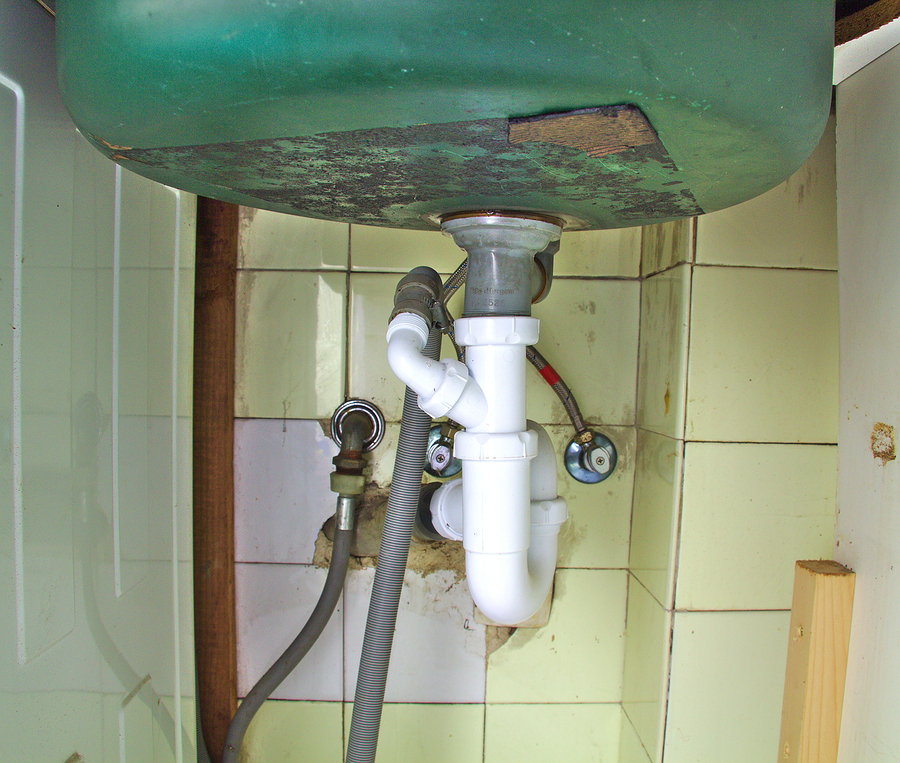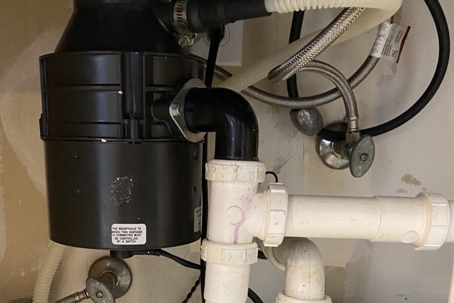My Definitive Guide to Fixing a Leaky Waste Disposal Unit
My Definitive Guide to Fixing a Leaky Waste Disposal Unit
Blog Article
What are your thoughts and feelings about Why Is My Garbage Disposal Leaking From the Bottom??

Garbage disposals are crucial cooking area home appliances that aid in disposing of food waste efficiently. Nonetheless, a leaking garbage disposal can be an aggravating and messy trouble to handle. The good news is, numerous leakages can be dealt with conveniently with a couple of basic steps. In this short article, we will go over just how to repair a dripping garbage disposal properly.
Introduction
Garbage disposals are mounted under cooking area sinks and are made to shred food waste right into smaller items, enabling it to go through the plumbing system conveniently. While these devices are normally trustworthy, leakages can take place over time because of damage, loosened connections, or damage to the device.
Step-by-Step Overview to Fixing a Dripping Waste Disposal Unit
Shut off the Power
Prior to trying any type of repairs, make certain that the power to the waste disposal unit device is shut off to prevent the risk of electrical shock.
Find the Leak
Recognize the specific place of the leakage and figure out the reason
Tighten Connections
Make use of a wrench to tighten any type of loosened connections in between the disposal device and the plumbing system.
Replace Seals or Gaskets
If the leakage is due to worn seals or gaskets, eliminate the old parts and replace them with brand-new ones.
Patching Splits or Holes
For cracks or openings in the disposal device, use epoxy or a suitable patching material to seal the broken location.
Recognizing the Resource of the Leakage
Prior to trying to deal with a leaking garbage disposal, it is essential to identify the resource of the leakage. This can generally be done via aesthetic evaluation or by conducting easy examinations.
Visual Evaluation
Examine the waste disposal unit device meticulously for any kind of indications of water leakage. Pay very close attention to locations around seals, gaskets, and link points.
Checking for Leaks
One way to examine for leaks is by running water via the disposal unit and looking for any kind of noticeable indicators of leak.
Common Root Causes Of Leaks in Trash Disposals
Worn Seals and Gaskets
Seals and gaskets play a crucial duty in stopping water from leaking out of the waste disposal unit. Over time, these parts can weaken, leading to leaks around the disposal unit.
Loose Connections
The links in between the garbage disposal and the pipes system can come to be loosened in time, triggering water to leakage out during operation.
Cracks or Holes in the Disposal Device
Physical damages to the waste disposal unit, such as splits or holes in the real estate, can additionally lead to leaks.
Devices and Products Needed for Dealing With a Dripping Waste Disposal Unit
Before beginning the repair procedure, gather the required tools and products, consisting of a screwdriver, flexible wrench, plumbing professional's putty, substitute seals or gaskets, and epoxy or patching material for fixing cracks or openings.
Checking the Garbage Disposal After Repair
Once the repair service is complete, examine the garbage disposal by running water with it to make certain that the leak has been dealt with.
Preventive Maintenance Tips to Stay Clear Of Future Leaks
To stop future leakages, it is essential to do normal upkeep on your garbage disposal. This includes keeping it clean, avoiding placing non-food things or tough things down the disposal, and occasionally looking for leakages or other problems.
Final thought
To conclude, repairing a leaking garbage disposal is a relatively straightforward procedure that can be completed with basic devices and products. By complying with the actions laid out in this article and exercising precautionary maintenance, you can maintain your garbage disposal in good working problem and avoid expensive repair services in the future.
What to Do About a Leaking Garbage Disposal
A leaking garbage disposal often goes unnoticed until you confront a sopping cabinet, a foul-smelling puddle, or an audible drip-drip-drip from the unit. The fix can be frustrating, too, because the leak can stem from a number of components in the system. Fortunately, with a little sleuthing, you can zero in on the leak and—depending on the exact location—stop the icky oozing and repair the component that caused it. Worst case scenario, if it turns out that the garbage disposal must be replaced, installing a new one is a reasonable do-it-yourself task for those with basic plumbing skills. Read on to keep the cash you’d otherwise hand over to a pro.
Prepare to find the leak
Prior to testing the garbage disposal for leaks, unplug it at the wall outlet and turn off the power from the breaker box to prevent electrical shock. Then insert a watertight sink stopper into your sink drain and wipe the unit dry with a clean cloth. In any handy container, mix a few drops of food coloring into a few cups of water, and pour the dyed water onto the sink stopper to help you locate the leak.
Investigate the source
the top, where the disposal meets the sink drain the side, where the dishwasher hose or main drain pipe connects to the disposal or the bottom of the unit Inspect each of these locations while gliding a light-colored rag over the unit; the dyed water will readily show on the rag and reveal the location of the leak. If a leak isn’t immediately apparent, remove the sink stopper and pour a few more cups of dyed water down the sink drain, then check for leaks again. Leaks near the top of the unit are more likely to show themselves while the sink is plugged, while side and bottom leaks are more noticeable while the sink is unplugged.
The metal sink flange that sits directly inside the sink drain is typically sealed around the top with plumber’s putty (a clay-like sealant) and then secured from under the sink with bolts. If the plumber’s putty deteriorates, or the bolts loosen, the flange can no longer form a watertight seal between the sink drain and the disposal—which could cause a leak at the top of the unit.
To reseal the leaky flange, you must first detach the garbage disposal. Start by loosening the screws securing the main drain pipe to the disposal, then loosen the screws in the metal clamp securing the dishwasher hose to the disposal and detach the drain pipe and dishwasher hose from the disposal. Loosen the screws in the mounting ring that connects the disposal to the metal mounting assembly beneath the sink, then pull down the disposal and carefully set it on a clean, dry surface. Loosen the bolts in the mounting assembly with a wrench, then pull down the mounting assembly and set it near the disposal.

We had been brought to that report about Tips on Fixing a Leaking Garbage Disposal through an acquaintance on a different website. Enjoyed our article? Please share it. Let others locate it. Thanks for your time spent reading it.
Get An Estimate Report this page